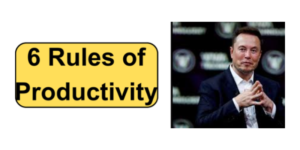Change management refers to the structured process of preparing, equipping, and supporting individuals and organisations to adopt new processes, technologies, and behaviours successfully (Cameron & Green, 2015). In an era marked by digital transformation, globalisation, and continuous disruption, effective change management is essential for ensuring organisational resilience and sustainability. The field encompasses models, leadership strategies, stakeholder engagement, communication, training, and cultural transformation.
1.0 Change Management Models
A cornerstone of the discipline is the use of models that guide the change process. Lewin’s Three-Step Model (unfreeze–change–refreeze) provides a simple foundation for understanding change dynamics (Burnes, 2017). Kotter’s Eight-Step Model expands on this by stressing vision creation, coalition-building, and reinforcement (Kotter, 2012).
The ADKAR model (Hiatt & Creasey, 2012) remains widely applied, particularly in individual change readiness. Contemporary scholarship stresses that no single model fits all contexts; instead, hybrid approaches are often required (Oguntoyinbo et al., 2025). For instance, robotic process automation in healthcare required a blend of Kotter’s urgency creation and ADKAR’s reinforcement mechanisms to address both technological and human concerns.
2.0 Stakeholder Analysis and Engagement
Stakeholders influence change success significantly. Analysing their needs, expectations, and potential resistance allows managers to tailor strategies. Cameron and Green (2015) emphasise mapping stakeholders by power and interest.
Recent studies highlight the importance of co-design and co-creation with stakeholders (Heijsters, 2025). In healthcare digitalisation, involving clinicians as co-designers improved adoption rates. Similarly, large-scale corporate transformations at firms like Unilever show that early and inclusive stakeholder engagement enhances legitimacy and commitment.
3.0 Change Readiness Assessment
Readiness assessments identify whether employees, systems, and leadership structures can support change. Assessments often cover leadership alignment, cultural openness, and resource allocation (Cameron & Green, 2015).
Al Shamsi (2025) found that evaluating employee readiness in Abu Dhabi Police during technological change highlighted training gaps and cultural barriers, enabling tailored interventions. Readiness diagnostics therefore act as early warning systems to prevent derailment.
4.0 Communication Strategies
Communication is the lifeblood of change management. Hiatt and Creasey (2012) argue that clarity, consistency, and timeliness are vital. Effective communication includes not only top-down announcements but also two-way dialogue.
Digital platforms now play a greater role in communication strategies, especially in remote and hybrid organisations. Research by Hundal, Rhodes and Laux (2025) stresses collaborative leadership communication as a critical enabler of digital transformation in healthcare. Celebrating small wins and milestones, as Kotter (2012) advises, also reinforces morale.
5.0 Change Leadership and Sponsorship
Leadership commitment is consistently cited as the most critical success factor in change (Cameron & Green, 2015). Sponsors must set the vision, mobilise resources, and model behaviours.
Gaur and Bisht (2025) argue that leadership effectiveness in technology adoption depends on strategic sponsorship and cultural alignment. Leaders like Satya Nadella (Microsoft) have shown how visionary leadership transforms organisational culture by linking digital innovation with employee empowerment.
6.0 Resistance Management
Resistance to change is inevitable. It may arise from fear of job loss, uncertainty, or cultural inertia (Hiatt & Creasey, 2012).
Contemporary research emphasises empathetic resistance management. Bello (2025) stresses that in oil and gas industries, overcoming resistance required culturally sensitive training and hybrid project management approaches. Strategies include open forums, early involvement, and demonstrating benefits through pilots. Resistance should not be viewed solely as an obstacle but as feedback for refining implementation (Suwenti et al., 2025).
7.0 Training and Development
Equipping employees with skills and confidence is essential. Tailored training ensures capability development and reduces anxiety (Cameron & Green, 2015).
Case studies highlight the role of digital literacy training during transformations. Gifa et al. (2025) describe how PT Telkom Indonesia bridged resistance by investing in upskilling. Similarly, Kumar and Jaiswal (2025) stress that sustainable corporate growth requires integrating green HRM training into change efforts.
8.0 Change Measurement and Evaluation
Without measurement, change progress cannot be sustained. KPIs may include adoption rates, employee engagement, or productivity outcomes (Cameron & Green, 2015).
Evaluation frameworks now incorporate both quantitative and qualitative metrics. Research by Cecannecchia (2025) on health initiatives underscores the importance of continuous evaluation and flexibility, adjusting strategies in real time. Organisations increasingly use digital dashboards to monitor adoption and feedback, ensuring accountability.
9.0 Organisational Culture Change
Culture is both a barrier and enabler of change. Schein (2010) argues that deep cultural assumptions must shift for sustained transformation. Aligning values with behaviours requires time and consistent reinforcement.
Recent studies link digital transformation success directly to cultural adaptation. Abedini and Esfahani (2025) show that inappropriate cultures in Iran’s insurance industry hindered digital initiatives until cultural change programmes addressed values and mindsets. Culture change is often the most challenging yet crucial aspect of transformation.
10.0 Sustaining Change
Sustainability means embedding new practices into everyday routines. Kotter (2012) highlights the importance of anchoring change in culture. Reinforcement mechanisms include continuous learning, recognition, and leadership modelling.
Fauzi and Kusuma (2025) emphasise long-term reinforcement strategies, especially in digital business contexts where rapid change is constant. Successful organisations institutionalise change through adaptive structures, continuous learning platforms, and recognition systems.
Case Examples
- Healthcare: Digital transformation of healthcare enterprises highlights the role of collaborative leadership and communication in sustaining adoption (Hundal et al., 2025).
- Technology: Microsoft’s cultural renewal under Nadella illustrates the role of vision, stakeholder engagement, and cultural change in large-scale transformation.
- Telecommunications: PT Telkom Indonesia demonstrates how targeted training and HR strategies reduce resistance (Gifa et al., 2025).
- Public Sector: Al Shamsi (2025) shows readiness assessments and tailored engagement as crucial for police technology adoption.
Change management is a complex but vital discipline that integrates models, leadership, communication, and cultural transformation to achieve sustainable outcomes. Modern evidence confirms that successful change requires inclusive stakeholder engagement, empathetic resistance management, continuous training, and robust evaluation systems.
The challenges of digital disruption, sustainability goals, and cultural diversity mean that organisations must adopt flexible, hybrid approaches that blend classic frameworks with contemporary adaptive practices. By embedding change into organisational culture and sustaining momentum through reinforcement, leaders can ensure resilience and growth in turbulent environments.
References
Abedini, A. & Esfahani, A.M. (2025). Designing an implementation model of digital transformation strategy in Iran’s insurance industry. Strategic Management Studies Journal.
Al Shamsi, R. (2025). Evaluation of employees’ views on technological changes in the Abu Dhabi Police. Nottingham Trent University Repository.
Bello, A.A. (2025). Agile and hybrid project management methodologies in oil and gas. CogNexus Journal.
Burnes, B. (2017). Kurt Lewin and the Harwood studies. Journal of Change Management, 17(2), pp. 91–100.
Cameron, E. & Green, M. (2015). Making Sense of Change Management. 4th ed. Kogan Page.
Cecannecchia, C. (2025). Make America Healthy Again: Analysis of a politicised health initiative. Frontiers in Health Services.
Fauzi, A. & Kusuma, K.A. (2025). Digital transformation in business management. International Journal of Law and Economics Review.
Gaur, M.H. & Bisht, B. (2025). Strategic frameworks for successful technology adoption. WAIMSC Proceedings.
Gifa, N.Z.P., Rizke, M.B. & Sari, S.R. (2025). HR strategy development in digital transformation. Jurnal Bisnis dan Kajian Digital.
Heijsters, F. (2025). Surfing through digitalisation: Co-design in patient-centred healthcare. Vrije Universiteit Amsterdam.
Hiatt, J.M. & Creasey, T.J. (2012). Change Management: The People Side of Change. 2nd ed. Prosci.
Hundal, G.S., Rhodes, D. & Laux, C. (2025). Digital transformation of healthcare enterprises. Sustainability, 17(13), p. 5690.
Kotter, J.P. (2012). Leading Change. Harvard Business Review Press.
Oguntoyinbo, S., Barazi, R. & Leon, M. (2025). Change management in robotic technology adoption. Journal of Organizational Change Management.
Schein, E.H. (2010). Organisational Culture and Leadership. 4th ed. Jossey-Bass.
Suwenti, R., Kurniawati, E. & Masdariah, E. (2025). Leadership transformation in Islamic education. Sosioedukasi Journal.









